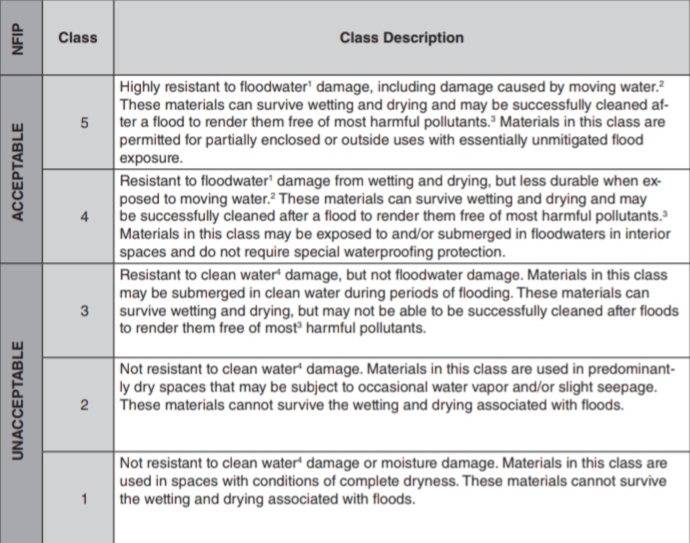Table of Contents
Introduction
Flood damage resistant materials can withstand flood water upto 72 hours. Within this time limit, there is no significance damage to the structure.
Common waterproof materials include concrete, ceramic tile, pressure-treated and seawater-treated plywood, pressure-treated wood, latex or bitumen, brick, and metal. There are many types of waterproof materials used for floors and walls.
Flood resistant materials are used for structural elements such as walls, floors, or other structures built below the Baseline Flood Elevation (BFE) or 100-year flood level. BFE refers to the “100-year flood”, the elevation associated with a 1% chance of flooding in a given year.
This article describes waterproof materials used to construct buildings in typical flood hazardous areas.
Classification of Flood Damage-Resistant Materials
Diffrent types of building materials are used as a flood damage
1. Flooring
- Concrete, concrete tiles, precast concrete etc.
- Latex or bitumen, ceramic, clay, terrazzo, vinyl and rubber sheets and tiles.
- Pressure Treated (PT) or Decay Resistant.
- PT wood and cold formed steel.
2. Wall and Ceiling Materials
- Brick, metal, concrete, cinder block, masonry, cement board etc.
- Polyester epoxy paint.
- Rot-resistant wood.
- Foam and closed cell insulation.
3. Other Materials
- Hollow metal door
- Cabinet
- Foam or closed cell insulation
Various class description of flood damage resistant materials are shown below.

Uses of Flood Damage Resistant Material
Flood resistant materials can withstand in water for a significant amount of time.
Building near to flood prone area are made of these materials.
These materials also used in area where water pressure are high. Flood resistant materials works as a flood barrier.
